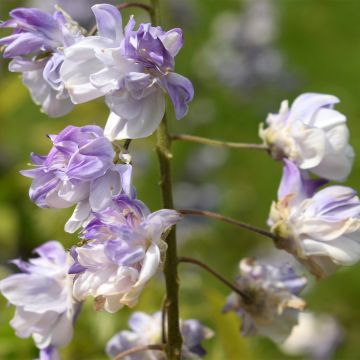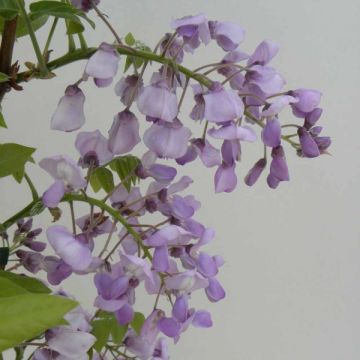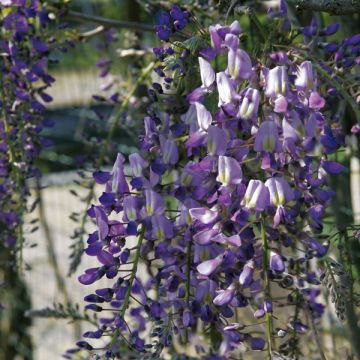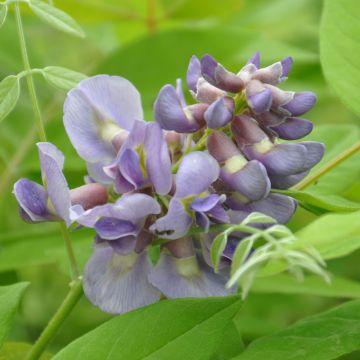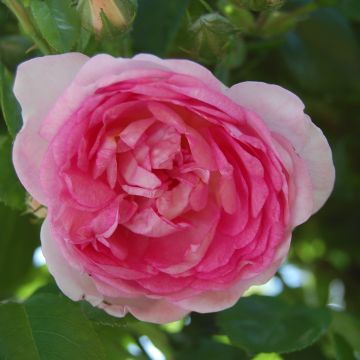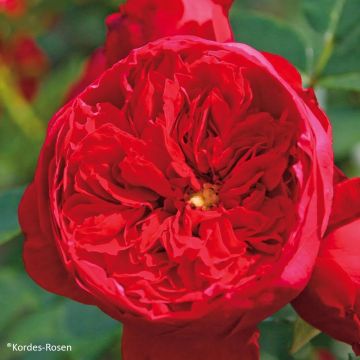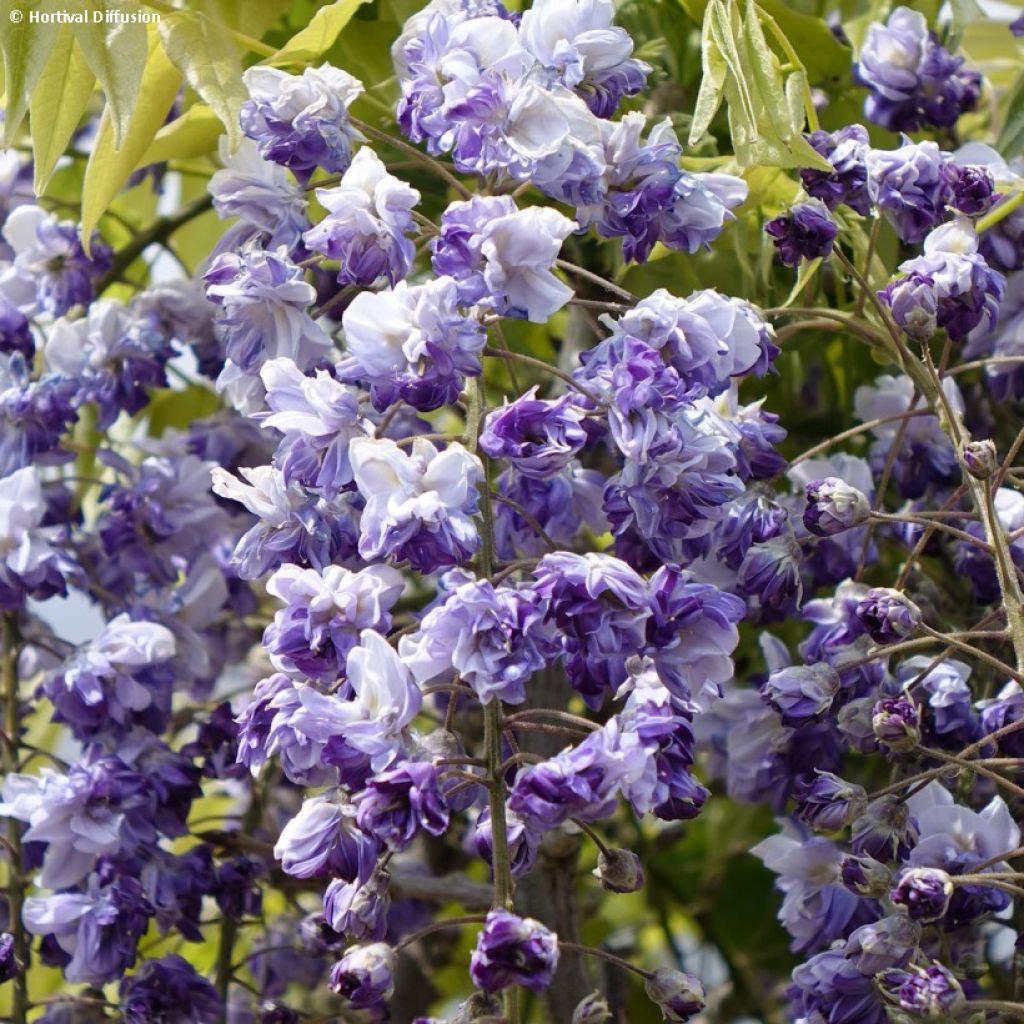

Glycine Grande Diva Cecilia - Wisteria (x) venusta
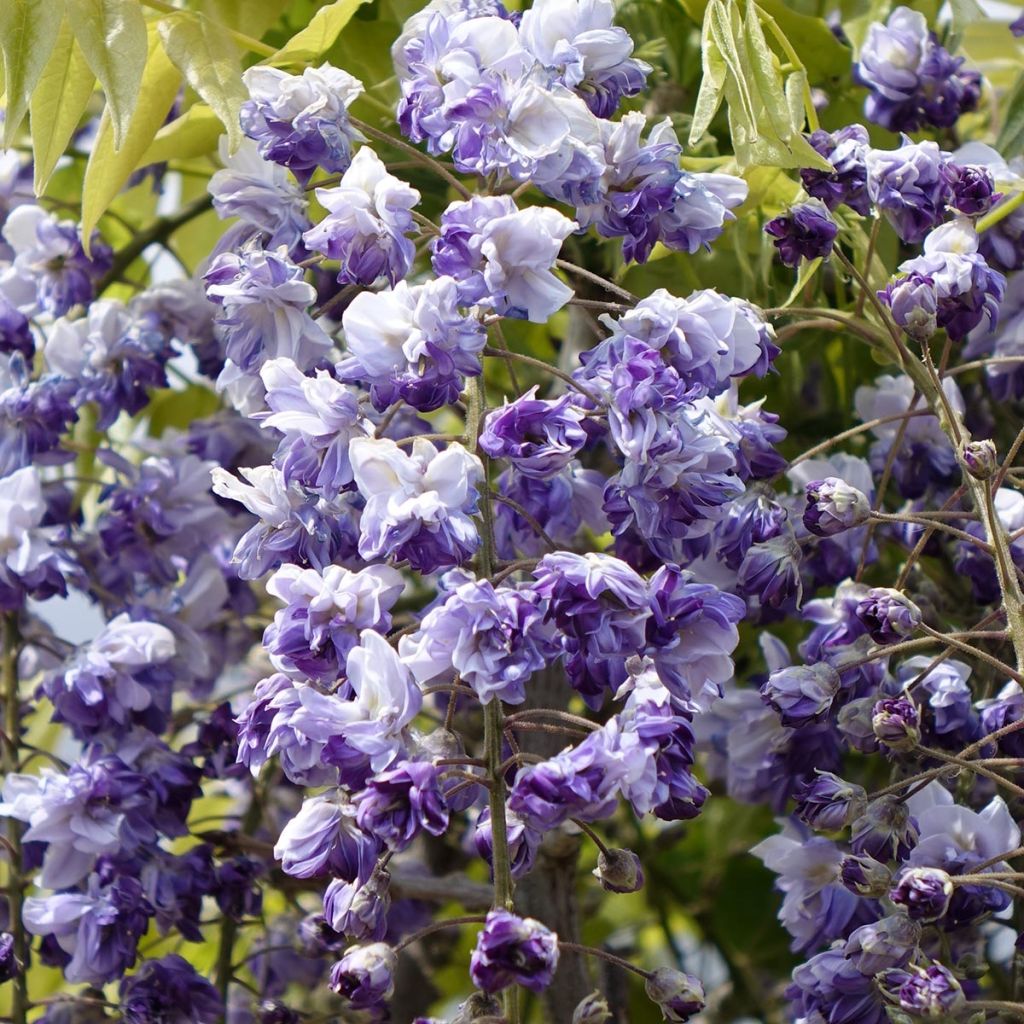

Wisteria GRANDE DIVA CECILIA
Wisteria GRANDE DIVA CECILIA
Wisteria x venusta GRANDE DIVA® CECILIA ‘MinwiCA05’ cov
Silky Wisteria
This item cannot be shipped to the selected country
Delivery charge from €5.90
Oversize package delivery charge from €6.90
More information
Schedule delivery date,
and select date in basket
This plant carries a 6 months recovery warranty
More information
We guarantee the quality of our plants for a full growing cycle, and will replace at our expense any plant that fails to recover under normal climatic and planting conditions.
From €5.90 for pickup delivery and €6.90 for home delivery
Express home delivery from €8.90.
Oversize package: home delivery by special carrier from €6.90 per order..
Express home delivery from €8.90.
Does this plant fit my garden?
Set up your Plantfit profile →
Description
Wisteria Grande Diva® Cecilia, like the other wisterias in the Grande Diva series, is a hybrid of W. brachybotrys (formerly W. venusta) that combines several qualities: rapid flowering, which occurs in the first years of cultivation, a harmonious and uniform flowering throughout the height of the plant, and a reduced vigour that limits the risk of damaging the supporting structure. The 'Diva' wisteria can easily be maintained at a smaller size through pruning, making it suitable for small gardens or even large pots on the terrace. This 'Cecilia' variety offers an abundance of double and bicoloured flowers, lavender blue and white, fragrant and attractive to pollinators in spring.
Wisteria Grande Diva® Cecilia 'MinwiCA05' cov is derived from, among others, a Japanese species of modest stature called the Silky or Graceful Wisteria. It is a French creation dating back to 2007, selected in Anjou by Minier nurseries. It is a small deciduous vine, with foliage appearing in spring and falling in autumn. As an adult, it can reach heights between 3m and 10m depending on how it is pruned and whether it is grown in the ground or in a container. Its twining stems bear leaves divided into 12 ovate leaflets, measuring 4 to 7cm long. These stems twine from left to right (dextrorse) around solid supports. The abundant flowering occurs in May-June, at the same time as the young foliage unfolds with a bronze caramel hue. The flowers are loose, pendulous clusters, 20cm long, fragrant, and composed of double, bicolored papilionaceous flowers, combining lavender blue and white petals. Hardy down to at least -20°C, the Grande Diva Cecilia wisteria is easy to grow in any loose and deep soil, ranging from moist to occasionally dry. This variety has a long lifespan, lasting over 100 years.
The 'Grande Diva Cecilia' wisteria is perfect for adorning a wall, railing, pergola, arbour, or porch in a romantic garden, even of a smaller size. While wisteria branches are usually capable of twisting even the sturdiest grids, this variety is much more "respectful" of its supports. It can also be planted in a large container on a balcony or terrace. It pairs well with a Mayleen montana clematis, a Purpurea Plena Elegans clematis, or perennial sweet peas.
Report an error about the product description
Plant habit
Flowering
Foliage
Botanical data
Wisteria
x venusta
GRANDE DIVA® CECILIA ‘MinwiCA05’ cov
Fabaceae
Silky Wisteria
Cultivar or hybrid
Other Wisterias
Planting and care
The Grande Diva Cecilia Wisteria should be planted in autumn or spring (March) in fertile, deep and well-drained soil in a sunny or semi-shaded location. Add compost and water well after planting. In February, when the flower buds are formed, prune the branches that are devoid of buds short (to 2 eyes) to aerate the plant. Do not keep more than 4 flower buds (rounded) on the same stem. To train a wisteria to climb a tree, no training pruning is required.
Planting period
Intended location
Care
-
, onOrder confirmed
Reply from on Promesse de fleurs
Foolproof climbers
Haven't found what you were looking for?
Hardiness is the lowest winter temperature a plant can endure without suffering serious damage or even dying. However, hardiness is affected by location (a sheltered area, such as a patio), protection (winter cover) and soil type (hardiness is improved by well-drained soil).

Photo Sharing Terms & Conditions
In order to encourage gardeners to interact and share their experiences, Promesse de fleurs offers various media enabling content to be uploaded onto its Site - in particular via the ‘Photo sharing’ module.
The User agrees to refrain from:
- Posting any content that is illegal, prejudicial, insulting, racist, inciteful to hatred, revisionist, contrary to public decency, that infringes on privacy or on the privacy rights of third parties, in particular the publicity rights of persons and goods, intellectual property rights, or the right to privacy.
- Submitting content on behalf of a third party;
- Impersonate the identity of a third party and/or publish any personal information about a third party;
In general, the User undertakes to refrain from any unethical behaviour.
All Content (in particular text, comments, files, images, photos, videos, creative works, etc.), which may be subject to property or intellectual property rights, image or other private rights, shall remain the property of the User, subject to the limited rights granted by the terms of the licence granted by Promesse de fleurs as stated below. Users are at liberty to publish or not to publish such Content on the Site, notably via the ‘Photo Sharing’ facility, and accept that this Content shall be made public and freely accessible, notably on the Internet.
Users further acknowledge, undertake to have ,and guarantee that they hold all necessary rights and permissions to publish such material on the Site, in particular with regard to the legislation in force pertaining to any privacy, property, intellectual property, image, or contractual rights, or rights of any other nature. By publishing such Content on the Site, Users acknowledge accepting full liability as publishers of the Content within the meaning of the law, and grant Promesse de fleurs, free of charge, an inclusive, worldwide licence for the said Content for the entire duration of its publication, including all reproduction, representation, up/downloading, displaying, performing, transmission, and storage rights.
Users also grant permission for their name to be linked to the Content and accept that this link may not always be made available.
By engaging in posting material, Users consent to their Content becoming automatically accessible on the Internet, in particular on other sites and/or blogs and/or web pages of the Promesse de fleurs site, including in particular social pages and the Promesse de fleurs catalogue.
Users may secure the removal of entrusted content free of charge by issuing a simple request via our contact form.
The flowering period indicated on our website applies to countries and regions located in USDA zone 8 (France, the United Kingdom, Ireland, the Netherlands, etc.)
It will vary according to where you live:
- In zones 9 to 10 (Italy, Spain, Greece, etc.), flowering will occur about 2 to 4 weeks earlier.
- In zones 6 to 7 (Germany, Poland, Slovenia, and lower mountainous regions), flowering will be delayed by 2 to 3 weeks.
- In zone 5 (Central Europe, Scandinavia), blooming will be delayed by 3 to 5 weeks.
In temperate climates, pruning of spring-flowering shrubs (forsythia, spireas, etc.) should be done just after flowering.
Pruning of summer-flowering shrubs (Indian Lilac, Perovskia, etc.) can be done in winter or spring.
In cold regions as well as with frost-sensitive plants, avoid pruning too early when severe frosts may still occur.
The planting period indicated on our website applies to countries and regions located in USDA zone 8 (France, United Kingdom, Ireland, Netherlands).
It will vary according to where you live:
- In Mediterranean zones (Marseille, Madrid, Milan, etc.), autumn and winter are the best planting periods.
- In continental zones (Strasbourg, Munich, Vienna, etc.), delay planting by 2 to 3 weeks in spring and bring it forward by 2 to 4 weeks in autumn.
- In mountainous regions (the Alps, Pyrenees, Carpathians, etc.), it is best to plant in late spring (May-June) or late summer (August-September).
The harvesting period indicated on our website applies to countries and regions in USDA zone 8 (France, England, Ireland, the Netherlands).
In colder areas (Scandinavia, Poland, Austria...) fruit and vegetable harvests are likely to be delayed by 3-4 weeks.
In warmer areas (Italy, Spain, Greece, etc.), harvesting will probably take place earlier, depending on weather conditions.
The sowing periods indicated on our website apply to countries and regions within USDA Zone 8 (France, UK, Ireland, Netherlands).
In colder areas (Scandinavia, Poland, Austria...), delay any outdoor sowing by 3-4 weeks, or sow under glass.
In warmer climes (Italy, Spain, Greece, etc.), bring outdoor sowing forward by a few weeks.



































